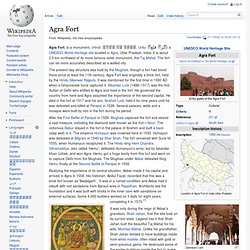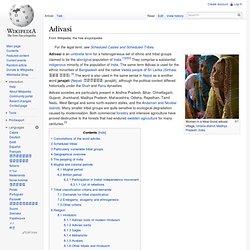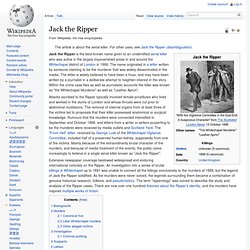

The King of Ireland's Son by Padraic Colum. Order of Arthur Conan Doyle Books. Order of Arthur Conan Doyle Books. Don't Make People into Heroes → Sherlock+John. Risus sardonicus. Risus sardonicus Risus sardonicus or rictus grin is a highly characteristic, abnormal, sustained spasm of the facial muscles that appears to produce grinning.[1] The name of the condition derives from the appearance of raised eyebrows and an open "grin" - which can appear sardonic or malevolent to the lay observer - displayed by those suffering from these muscle spasms.

Causes[edit] It is most often observed as a sign of tetanus.[2] It can also be caused by poisoning with strychnine.[3] In 2009 scientists at the University of Eastern Piedmont in Italy claimed to have identified hemlock water dropwort (Oenanthe crocata) as the plant historically responsible for producing the sardonic grin.[4][5] This plant is the most likely candidate for the "sardonic herb," which was a neurotoxic plant used for the ritual killing of elderly people in pre-Roman Sardinia. In popular culture[edit] See also[edit] References[edit] External links[edit] Photo. Agra Fort. Deewan I am Agra Fort, is a monument, (Hindi: आगरा का किला, Urdu: آگرہ قلعہ) a UNESCO World Heritage site located in Agra, Uttar Pradesh, India.

It is about 2.5 km northwest of its more famous sister monument, the Taj Mahal. The fort can be more accurately described as a walled city. The present-day structure was built by the Mughals, though a fort had stood there since at least the 11th century. Agra Fort was originally a brick fort, held by the Hindu Sikarwar Rajputs. Andaman Islands. Detailed map of the Andaman and Nicobar Islands The Andaman Islands form an archipelago in the Bay of Bengal between India, to the west, and Myanmar, to the north and east.

Most are part of the Andaman and Nicobar Islands Union Territory of India, while a small number in the north of the archipelago, including the Coco Islands, belong to Myanmar. History[edit] Comparative distributions of Andamanese indigenous peoples, pre-18C vs present-day Early inhabitants[edit] The Andaman islands have been inhabited for several thousand years, at the very least. The Andamans are theorized to be a key stepping stone in a great coastal migration of humans from Africa via the Arabian peninsula, along the coastal regions of the Indian mainland and towards Southeast Asia, Japan and Oceania.[2] Traveller reports[edit] En.wikipedia.org/wiki/Adivasi.
Adivasi is an umbrella term for a heterogeneous set of ethnic and tribal groups claimed to be the aboriginal population of India.[1][2][3] They comprise a substantial indigenous minority of the population of India.

The same term Adivasi is used for the ethnic minorities of Bangladesh and the native Vedda people of Sri Lanka (Sinhala: ආදී වාස).[4] The word is also used in the same sense in Nepal as is another word janajati (Nepali: जनजाति; janajāti), although the political context differed historically under the Shah and Rana dynasties. Adivasi societies are particularly present in Andhra Pradesh, Bihar, Chhattisgarh, Gujarat, Jharkhand, Madhya Pradesh, Maharashtra, Odisha, Rajasthan, Tamil Nadu, West Bengal and some north-eastern states, and the Andaman and Nicobar Islands. Many smaller tribal groups are quite sensitive to ecological degradation caused by modernisation. Joseph Bell. Joseph Bell, JP, DL, FRCS (2 December 1837 – 4 October 1911) was a Scottish lecturer at the medical school of the University of Edinburgh in the 19th century.

He is perhaps best known as an inspiration for the literary character Sherlock Holmes. Life and career[edit] Bell was a great-grandson of Benjamin Bell, a forensic surgeon. In his instruction, Joseph Bell emphasized the importance of close observation in making a diagnosis. To illustrate this, he would often pick a stranger and, by observing him, deduce his occupation and recent activities. Bell studied medicine at the University of Edinburgh Medical School and received an MD in 1859.
Power Of Logic. Arthur Conan Doyle bibliography. Jack the Ripper. Jack the Ripper is the best-known name given to an unidentified serial killer who was active in the largely impoverished areas in and around the Whitechapel district of London in 1888.

The name originated in a letter written by someone claiming to be the murderer that was widely disseminated in the media. The letter is widely believed to have been a hoax, and may have been written by a journalist in a deliberate attempt to heighten interest in the story. Within the crime case files as well as journalistic accounts the killer was known as "the Whitechapel Murderer" as well as "Leather Apron". Attacks ascribed to the Ripper typically involved female prostitutes who lived and worked in the slums of London and whose throats were cut prior to abdominal mutilations. The removal of internal organs from at least three of the victims led to proposals that their killer possessed anatomical or surgical knowledge. Background Murders Canonical five Later Whitechapel murders Other alleged victims. Ardlamont murder. The Ardlamont murder (also known as the Ardlamont mystery and the Monson case[1]), which took place in Argyll, Scotland, on 10 August 1893, gave rise to two high-profile court cases: a murder trial in Edinburgh (HM Advocate v Monson), and a defamation trial in London (Monson v Tussauds Ltd) the following year.

Alfred John Monson received the Scottish verdict of "not proven" in his High Court of Justiciary trial for the murder of Cecil Hambrough. Then, in 1894, he sued Madame Tussauds for libel and was awarded one farthing (the lowest possible amount at the time) in damages. The case established the principle of "libel by innuendo" in English law, and Monson v Tussauds Ltd[2] has been used to draw up defamation laws in many countries since.